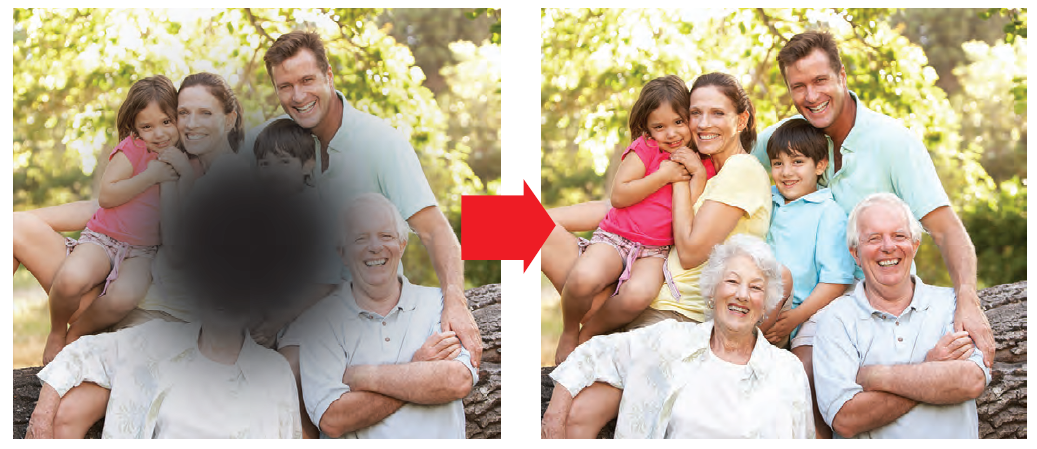By David Blyweiss, M.D., Advanced Natural Wellness
November 18, 2013
- What REALLY causes winter depression?
- Lighten up your winter blues
- 3 tips for a happier outcome
Once the cold weather sets in, my practice starts busting at the seams with patients who migrate south for the winter. These folks are from all parts of the north… New York, Quebec, Minneapolis and other frosty cities.
Living in the north is tough for many of these people. And I’m not just taking about dealing with the snow, wind and cold weather.
You see, the short, blustery winter days can have a very negative impact on those who suffer from a condition known as seasonal affective disorder (SAD.) In fact, this is often one of the reasons they head down here to Florida during the winter months.
The symptoms of SAD are very similar to depression. They can include feeling sluggish and withdrawn, cravings for sweet and starchy foods, weight gain and the desire to sleep for as long as you can.
Sadly, the first line of defense a lot of doctors use to combat SAD is antidepressant drugs. You know… Paxil, Prozac, Zoloft, Cymbalta, Wellbutrin and others.
Now, I really don’t like the idea of handing out these types of drugs. They’re addictive… They cloud your thinking… And come with all sorts of side effects nobody wants.
For starters, they can play havoc with your sex life – from sexual performance to erectile dysfunction. They can also make it hard to sleep and leave you feeling tired, dizzy and nauseous.
MD Exposes the Hidden Danger to Your Eyes

When your eyesight starts to fail, it's a real problem. Suddenly you can't go to the grocery store... you can't get to the doctor if you have an emergency... you can't meet your friends for dinner…
Your "regular" doctor doesn't have time to keep up with the latest research. And the same goes for eye doctors. They go to school to learn how to fit you for glasses and contacts, but have no way of preventing the damage and loss of eyesight that threatens your freedom and independence.
Let me show you something that explains a LOT about how your eyes work.
In my FREE Special Report, I'll show you a HUGE, untapped resource for your eyes that safely and naturally restores clear, effortless eyesight.
Click here to get started...
I don’t know about you, but these side effects would make me feel even more depressed than I was to start with!
So the first thing I do is help wean my SAD patients off the antidepressants.
Then I work with them to embrace healthier and more effective ways to treat their winter blues.
I have to admit. Winter, in itself, can be pretty depressing. But today it’s widely accepted that the root cause of SAD comes from the shorter days.
You see, the long hours of darkness can disrupt your body clock (also known as circadian rhythm.) This causes your body to produce too much melatonin, which is what makes you feel tired and wanting to sleep all day.
At the same time, production of the “feel-good” neurotransmitter serotonin declines. So you end up feeling lethargic and unhappy at the same time.
To top it off, when your melatonin levels increase, your vitamin D levels decrease. And low levels of vitamin D are strongly linked to depression.
You can blame it on the short, dark days of winter and a lack of sufficient sunlight.
However, there are two simple remedies to combat overproduction of melatonin and reduced levels of serotonin and vitamin D.
The first is light therapy. Most patients see benefits within just a few days. But the treatments have to be consistent. If therapy is discontinued, the benefits are lost.
It’s pretty simple.
For 20 minutes to a few hours each day, patients are exposed to a specially made light box that mimics sunlight. This broad-spectrum light causes a decrease in melatonin production and can re-establish the body’s natural circadian rhythms. And decreases the effects of SAD.
The World's Quickest Solution for Ending Prostate and Urinary Misery
This has recently been revealed to be one of the only real breakthroughs in prostate health.
The seeds of a strange fruit (sometimes called "Chinese Apples") hold powerful phytonutrients that are a revolution in prostate health.
In fact, UCLA and Veterans Administration research have now proved this to be true.
Not only that, but it may be the worlds quickest solution for ending prostate misery.
Simply stated, these phytonutrients represent a huge step beyond beta sitosterol, saw palmetto, and other phytosterols alone.
Simply click HERE if you want to have fast prostate relief...restful, uninterrupted sleep...no more constant "urges to go"...enhanced virility...and optimal prostate support for life.
When choosing a light therapy box, you should look for one that is designed specifically for seasonal affective disorder. Others are designed for skin disorders.
You should also find a light box that emits as little UV rays as possible. Compare the different models and choose one with the lowest emissions.
Studies support getting and using a “bright white” light emitting box over a “blue” light emitting box. Make sure the one you get is bright white light. Plus blue light can increase the risk of harming your eyes. You should definitely consult your physician when using a light box – so your health status can be monitored.
Last, make sure you get a model that works in your environment. You should plan on having the box no further than 2 feet from you – so pick a design that works in your space.
My second recommendation is to supplement with vitamin D.
Studies have proved vitamin D plays a role in easing seasonal depression. Taking just 2,000 IUs of vitamin D3 in cholecalciferol form each day should do the trick.
But if your doctor finds that you suffer from a vitamin D deficiency, increase that amount up to 5,000 IU.
It’s also important to take advantage of whatever sun there is during the winter months. On those days when the sun shines, be sure to spend some time outdoors. A little sunshine does wonders when it comes to boosting your mental health.
I also have a few other tips that will help keep you on track and ward off those winter blues for good.
Light therapy and vitamin D supplementation are two of the most important things you can do to halt SAD in its tracks. That’s because they both target the problem right at the source.
But there are a couple of other things that can help ensure your success and give you an extra boost of happy.
Don’t give in to unhealthy cravings. One thing that happens when you have SAD is you start craving sweets and starches. For the most effective and enduring results year-round, lay off or cut down on sugar and meat, and add plenty of whole foods and fiber to your diet.
Eat whole grains (brown rice or quinoa pasta – and opting for heartier breads made from grains other than wheat) fruit, nuts and omega-3–rich fish (sardines are particularly good for depression.) Including fresh, organic fruits and veggies with every meal is crucial this time of year.
Get moving. The last thing you want to do when you’re feeling lethargic is exercise. But it’s one of the single best treatments for SAD. Better yet, the more you exercise the more you’ll feel like staying active and in motion. And even when it’s cold, you can find places to take a walk – like the mall – or the local YMCA.
A number of my patients boost their energy by dancing. This is especially helpful in the morning. Put on your favorite music and let your feet free for 10 minutes.
You’ll want to build up your favorite exercise to 30 minutes every day or so. If you need structure, join a dance or yoga class. Many communities have community classes for little or no cost. And in no time at all you’ll be feeling brighter and happier.
Boost mood with aromatherapy. Another way to boost your spirits is with aromatherapy. Aromatherapy reduces anxiety and depression, improves sleep and enhances a sense of well-being.
It’s easy enough. Just try a few drops of lavender, jasmine or ylang ylang essential oil in your bath or sprinkled on your pillow. These uplifting scents are sure to brighten your dark winter mood.
Here’s to a happy and healthy winter for all…
References
Anderson JL. Lux vs. wavelength in light treatment of Seasonal Affective Disorder. Acta Psychiatrica Scandinavica. 2009;120:203-212.
Anglin RE, Samaan Z, Walter SD, McDonald SD. Vitamin D deficiency and depression in adults: systematic review and meta-analysis. Br J Psychiatry. 2013 Feb;202:100-7.
Edge J. “A pilot study addressing the effect of aromatherapy massage on mood, anxiety and relaxation in adult mental health.” Complementary Therapies in Nursing and Midwifery. 2003;9:90-97





